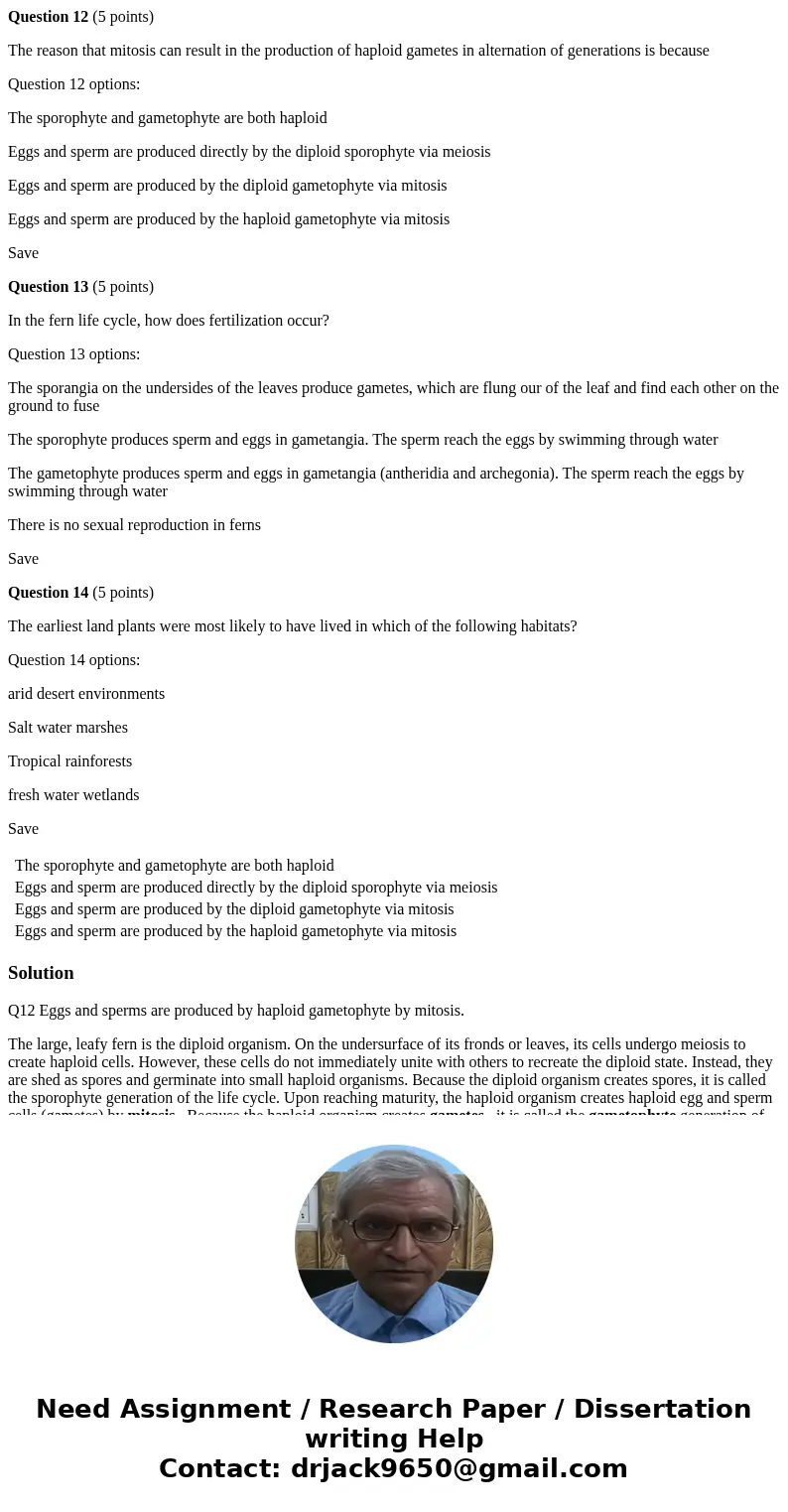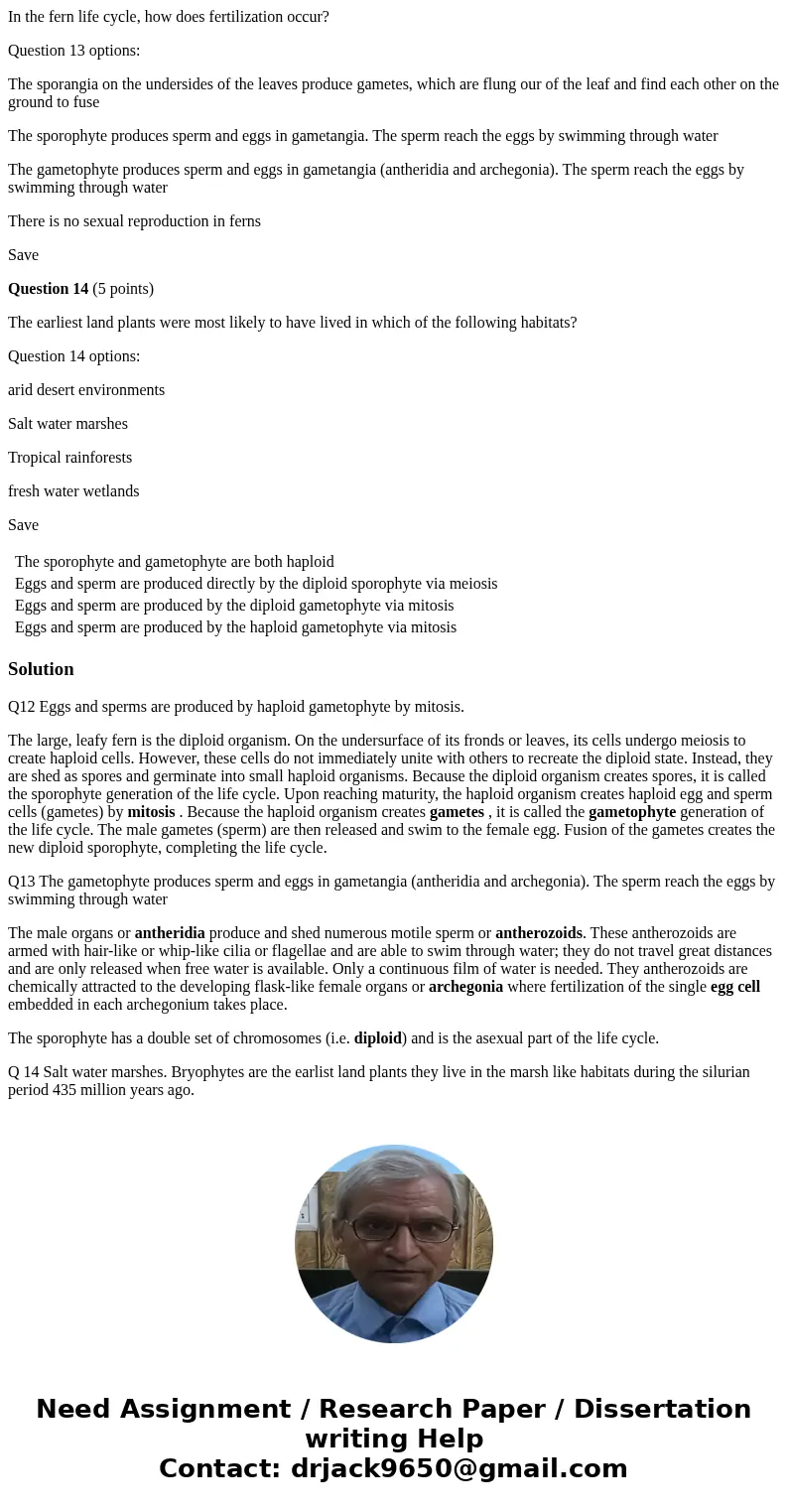Question 12 5 points The reason that mitosis can result in t
Question 12 (5 points)
The reason that mitosis can result in the production of haploid gametes in alternation of generations is because
Question 12 options:
The sporophyte and gametophyte are both haploid
Eggs and sperm are produced directly by the diploid sporophyte via meiosis
Eggs and sperm are produced by the diploid gametophyte via mitosis
Eggs and sperm are produced by the haploid gametophyte via mitosis
Save
Question 13 (5 points)
In the fern life cycle, how does fertilization occur?
Question 13 options:
The sporangia on the undersides of the leaves produce gametes, which are flung our of the leaf and find each other on the ground to fuse
The sporophyte produces sperm and eggs in gametangia. The sperm reach the eggs by swimming through water
The gametophyte produces sperm and eggs in gametangia (antheridia and archegonia). The sperm reach the eggs by swimming through water
There is no sexual reproduction in ferns
Save
Question 14 (5 points)
The earliest land plants were most likely to have lived in which of the following habitats?
Question 14 options:
arid desert environments
Salt water marshes
Tropical rainforests
fresh water wetlands
Save
| The sporophyte and gametophyte are both haploid | |
| Eggs and sperm are produced directly by the diploid sporophyte via meiosis | |
| Eggs and sperm are produced by the diploid gametophyte via mitosis | |
| Eggs and sperm are produced by the haploid gametophyte via mitosis |
Solution
Q12 Eggs and sperms are produced by haploid gametophyte by mitosis.
The large, leafy fern is the diploid organism. On the undersurface of its fronds or leaves, its cells undergo meiosis to create haploid cells. However, these cells do not immediately unite with others to recreate the diploid state. Instead, they are shed as spores and germinate into small haploid organisms. Because the diploid organism creates spores, it is called the sporophyte generation of the life cycle. Upon reaching maturity, the haploid organism creates haploid egg and sperm cells (gametes) by mitosis . Because the haploid organism creates gametes , it is called the gametophyte generation of the life cycle. The male gametes (sperm) are then released and swim to the female egg. Fusion of the gametes creates the new diploid sporophyte, completing the life cycle.
Q13 The gametophyte produces sperm and eggs in gametangia (antheridia and archegonia). The sperm reach the eggs by swimming through water
The male organs or antheridia produce and shed numerous motile sperm or antherozoids. These antherozoids are armed with hair-like or whip-like cilia or flagellae and are able to swim through water; they do not travel great distances and are only released when free water is available. Only a continuous film of water is needed. They antherozoids are chemically attracted to the developing flask-like female organs or archegonia where fertilization of the single egg cell embedded in each archegonium takes place.
The sporophyte has a double set of chromosomes (i.e. diploid) and is the asexual part of the life cycle.
Q 14 Salt water marshes. Bryophytes are the earlist land plants they live in the marsh like habitats during the silurian period 435 million years ago.


 Homework Sourse
Homework Sourse